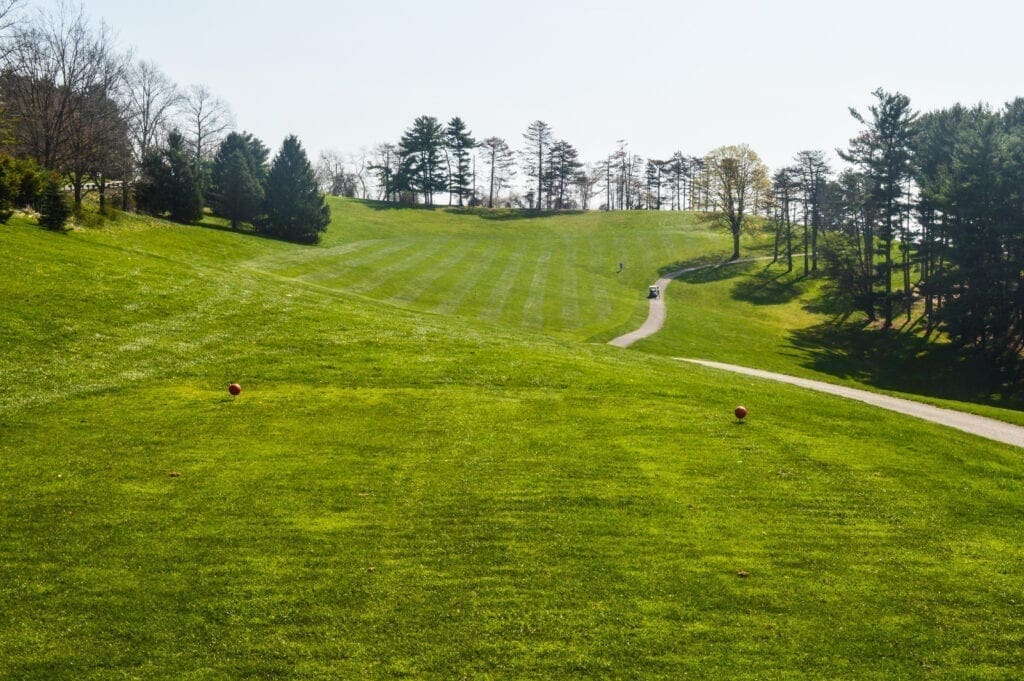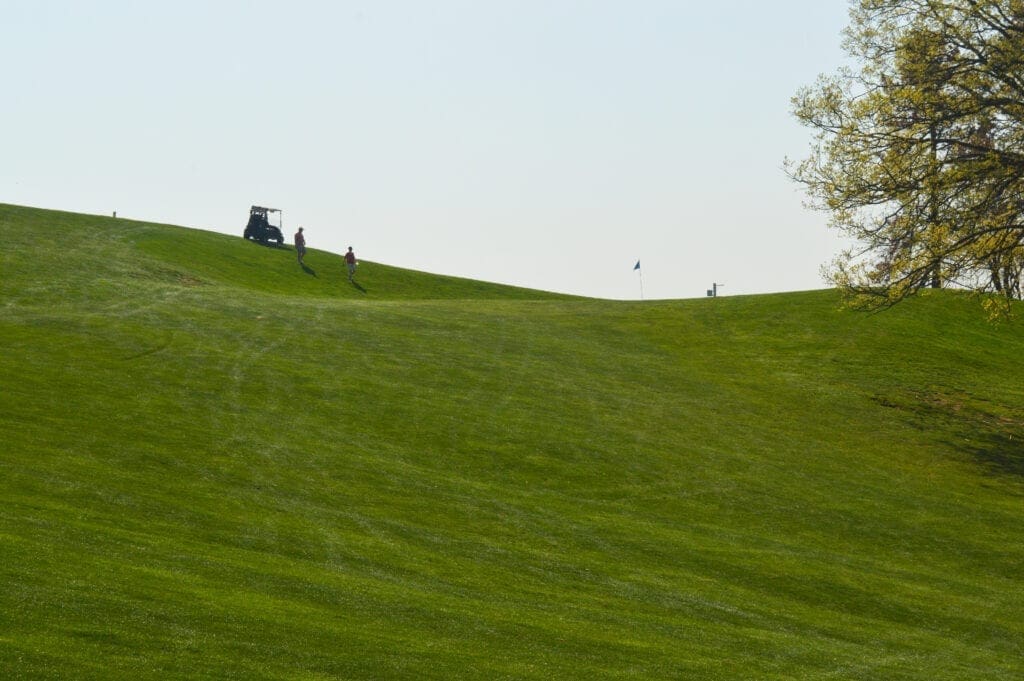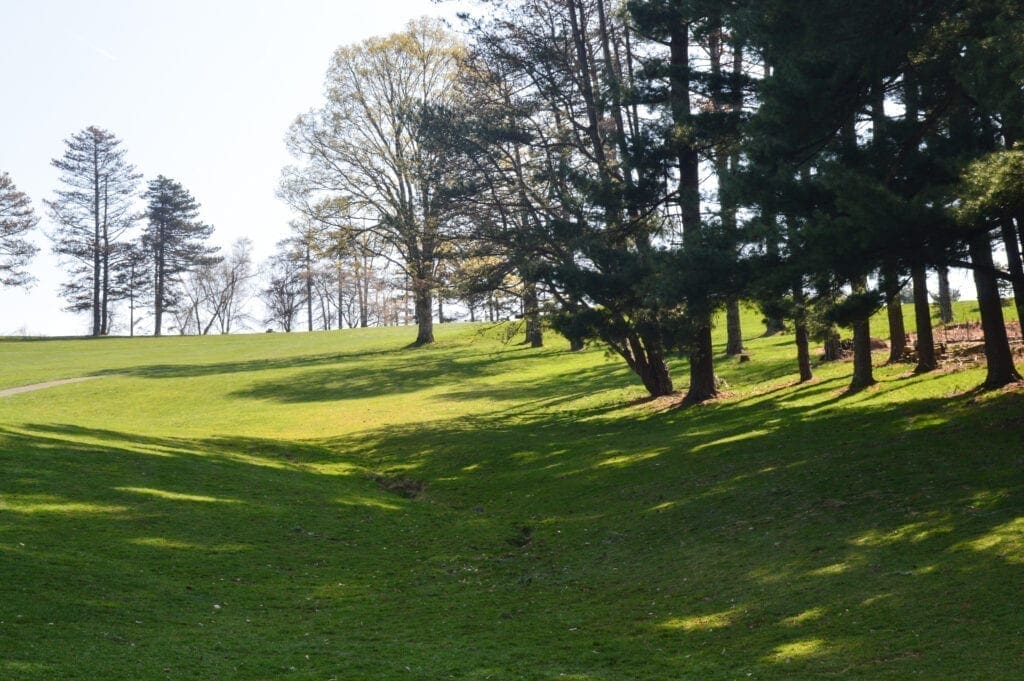There are only two ways to play No. 11 on Oglebay’s Crispin Golf Course, a 351-yard Par 4 that is nestled next to W.Va. Route 88 and winds right.
The fairway is far from level, and the left-to-right slope is why it’s the hill that attracts the most sledders and tubers during wintry weather. That slope, in fact, has everything to do with the “right way” to play No. 11.
“Stay left,” is the advice most offer to newcomers to Crispin, and that’s because if a player’s drive travels to right, there is a 75-foot obstacle between golfer and green.
“And that Maple grows a little taller for each new golf season, too,” said Randy Worls, the longtime CEO of Oglebay who now works with the Oglebay Foundation. “And that means it’s far more difficult to get over that Maple than it was 10 years ago.”

The Maple tree, according to Worls, was planted at the time the course was constructed in 1930, and it always has been a topic golfers have brought to his attention.
“I’ve always said that I’m surprised someone hasn’t chopped that tree down by now, but it was usually tongue-in-cheek when I did because some of the guys would complain about that Maple. Some of them have even said that Maple ruined their round,” he said with a chuckle. “But it’s such a beautiful tree that I really didn’t think they ever would.
“I’ve known for years to stay left of the tee on 11, but through the years I have been behind that Maple many times. When that happens, I just keep in my mind that you don’t have to be on the green in two to par the hole. If you make a couple of nice shots around that tree, you can still par,” Worls explained. “Or you can try to go over it, or under it if you are determined to be on the green in two, but the best thing to do is to stay far away from that Maple tree.”


The Original Oglebay Golf Course
The Crispin course was the first of the three Oglebay golf courses, and it was designed by Robert Biery in the late 1920s. The 18 holes offer slopes and elevation that are, well, harsh, and the uneven lie is an every-hole experience. The front nine offers three Par 3s, three Par 4s, and three Par 5s, and the back nine features a pair of Par 3s, one Par 5, and six Par 4s.
“When they built Crispin, they didn’t have the equipment that was used to build the Palmer and Jones courses,” explained Danny Ackerman, general manager of golf operations for Oglebay. “It was more like shovels and more conventional tools, and they really didn’t move a lot of earth back in the 1930s. They just built Crispin on the land they had to work with.
“And Crispin remains very popular with both the local golfers and the out-of-town people who come in to play, so when it was built doesn’t seem to matter to anyone,” he said. “We had 82,000 rounds played on our golf courses last year, and the most rounds were recorded on the Crispin Golf Course.”

It remains Worls’ favorite, too.
“I am a fan of both the Palmer and Jones courses, but if I had to pick my favorite course, it’s still Crispin,” the former CEO said. “It’s the type of course where you have a chance to reach the greens in two or three shots and have a chance to par, and the par-3 holes are very challenging. And the course is very popular for local golfers, too, and each year there are more rounds played on Crispin than any of the other courses.
“A lot of local golfers grew up on Crispin. It’s the course where they learned how to play the game,” Worls continued. “Crispin is not one of those really long courses either. It’s about 5,600 yards, so it’s a golf course that’s fun to play, and that’s a good thing because the game of golf is supposed to be fun.”
Until, of course, that Maple tree comes into play.
“That Maple tree is the one thing I’ve always heard about the most when it comes to golfers complaining about something on the course,” Worls said. “But that tree does give a golfer a real excuse for not making it to the green in two shots. But, hey, it’s going to stay there for many more years, and there are ways of getting around it if you’ve made the mistake of going right on No. 11.
“A lot of people believe that when you are playing a Par 4 like No. 11 you always have to be hitting the ball toward the green every shot, but that’s simply not true,” he explained. “On No. 12, for instance, you have to hit away from the green to set up the next shot that can be toward the green as long as you’ve made a good first shot. If you play that hole the right way, you’ll have a chance for par every time.”



